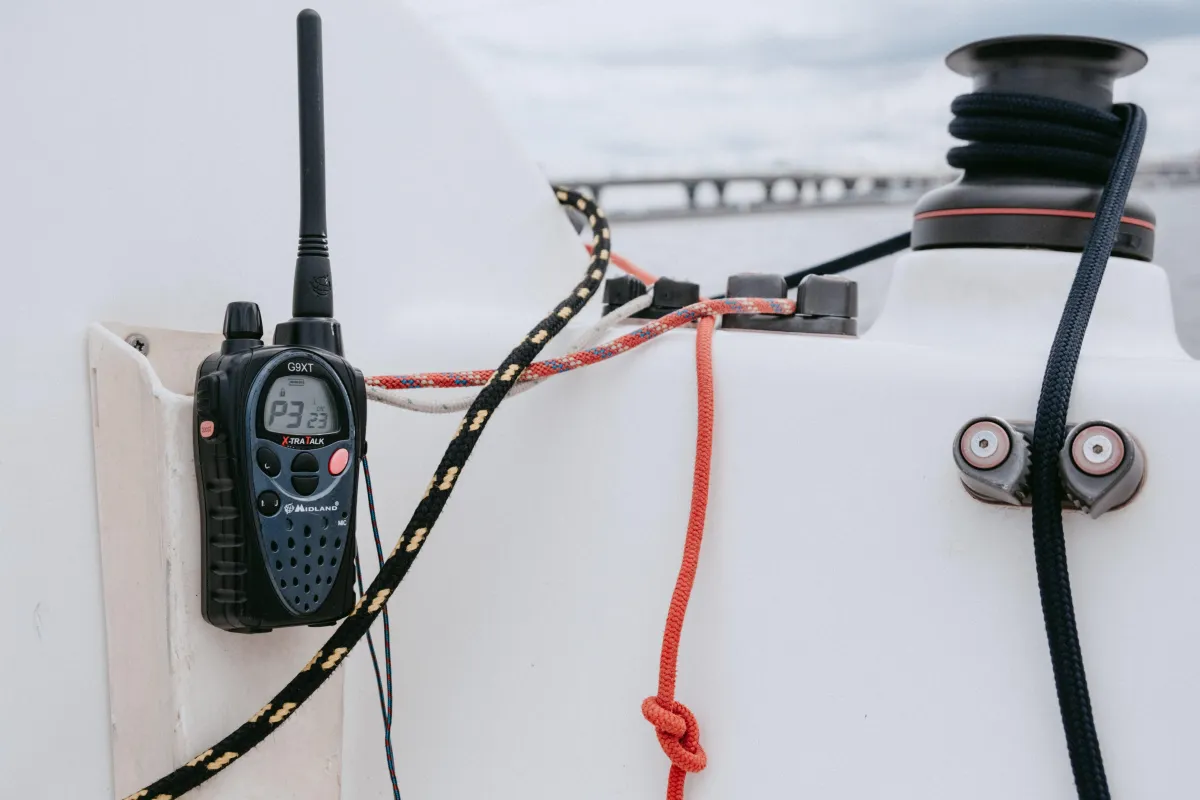Oceanwide Blog

Understanding Marine VHF Radios: Features and Best Practices
Introduction:
Marine VHF radios are an integral part of safe and efficient communication while boating. Whether you're cruising along the coastline, embarking on a fishing adventure, or navigating through unfamiliar waters, understanding the features and best practices of marine VHF radios is essential.
In this blog post, we will delve into the world of marine VHF radios, exploring their key features and offering valuable insights into how to use them effectively.

With that said, let's get into all you need to know about Marine VHF Radios 👊
Key Features of Marine VHF Radios:
Channel Selection: Marine VHF radios operate on specific channels designated for different purposes. Channels 16 and 9 are particularly important. Channel 16 is the international distress channel and should only be used in emergencies. Channel 9 is used for hailing and non-commercial communications. Familiarize yourself with the purpose of each channel to ensure proper communication.
Digital Selective Calling (DSC): DSC is a critical feature that allows you to send distress signals and communicate with specific vessels using a unique identification number. In emergencies, DSC transmits your vessel's position and nature of distress, expediting rescue efforts.
GPS Integration: Some marine VHF radios have GPS integration, which automatically includes your vessel's coordinates in distress calls sent via DSC. This feature enhances accuracy and helps rescuers locate you quickly.
Weather Alerts: Many marine VHF radios are equipped with NOAA weather alerts, providing real-time updates on weather conditions, including storm warnings and marine forecasts. Staying informed about changing weather patterns is crucial for safe boating.
AIS Integration: Advanced models may offer Automatic Identification System (AIS) integration, allowing you to receive AIS information from nearby vessels and display it on your radio's screen. This enhances situational awareness and helps prevent collisions.
Best Practices for Using Marine VHF Radios:
Check Regulations: Familiarize yourself with local regulations and licensing requirements for using marine VHF radios. Different countries may have specific rules and frequencies.
Emergency Use Only: Channel 16 is reserved for distress calls and emergencies. Use this channel responsibly and avoid unnecessary transmissions.
Clear Communication: Keep your transmissions concise and clear. Use proper radio etiquette, including the "Mayday," "Pan-Pan," and "Securité" calls for different levels of urgency.
Testing and Monitoring: Regularly test your marine VHF radio's functionality and ensure that it is properly connected to a power source and antenna. Monitor Channel 16 and other relevant channels to stay informed about potential hazards or emergencies.
Battery Management: Ensure your radio's battery is charged before every trip. Consider carrying spare batteries or a backup power source, especially on longer journeys.
Practice Routine Checks: Perform routine maintenance checks to ensure your radio is in good working condition. Inspect the antenna, connections, and controls for any signs of damage or wear.
Conclusion:
Marine VHF radios are indispensable tools for communication and safety on the water. Understanding their features and following best practices will enhance your boating experience and contribute to a safer maritime environment for all. Remember, responsible radio usage not only ensures effective communication but also contributes to a more coordinated and secure boating community. Whether you're a seasoned sailor or a novice boater, mastering the art of marine VHF radios is a skill that can make a significant difference in your on-water adventures. Reach out to Oceanwide Electronics with any and all questions today!

Copyright © 2023 Oceanwide Electronics

Copyright © 2023 Oceanwide Electronics


